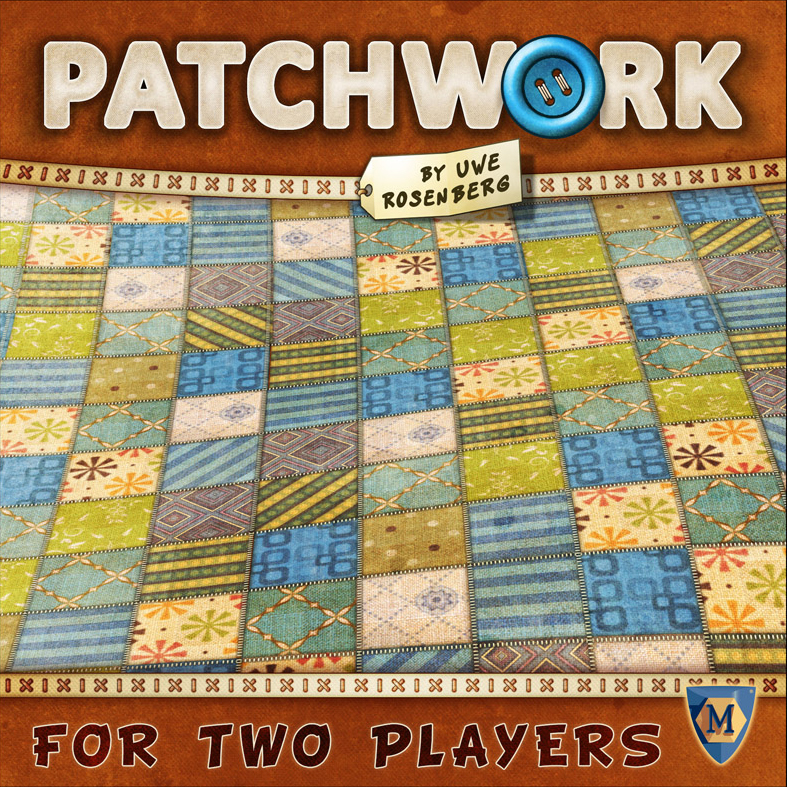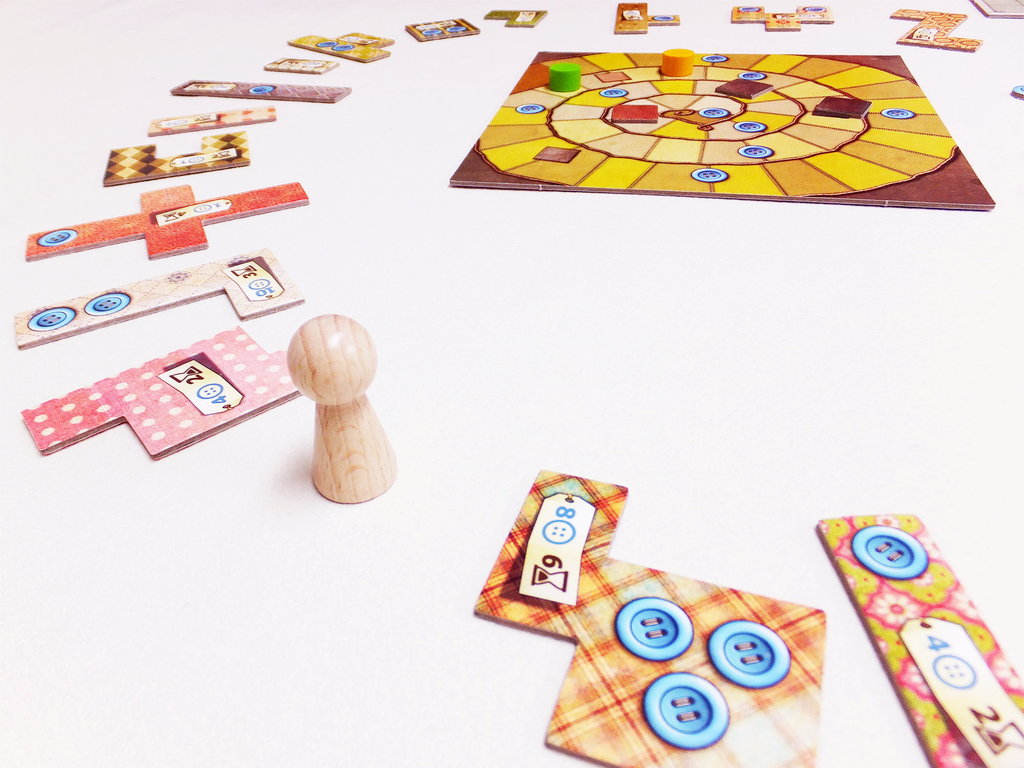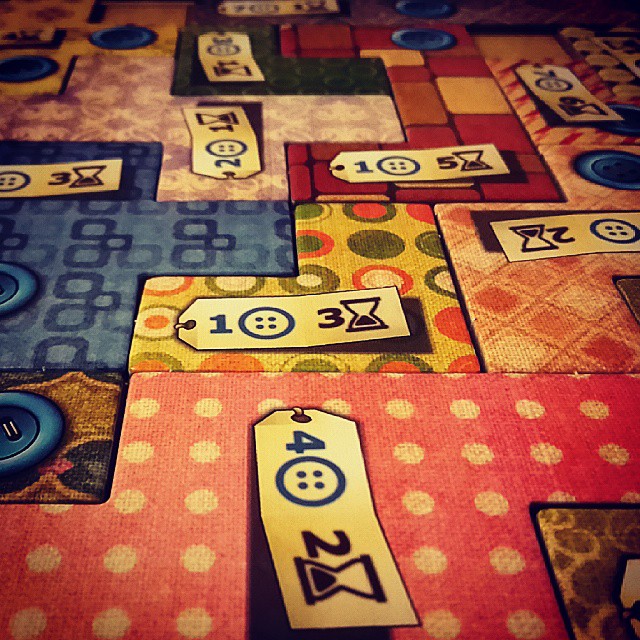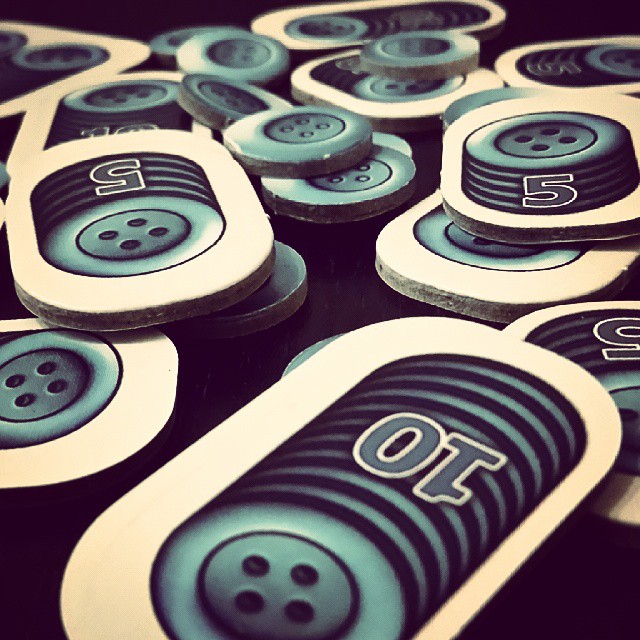Patchwork Review

What is it? Patchwork is a two-player only abstract strategy game...about making quilts. Except it isn't. It's about perfect information. Is that game perfect?
Crixus breathed in the crowd’s rapt attention. Not a seat in the Colosseum was empty – people had journeyed from every distant corner to bear witness to this clash of titans, two combatants of peerless skill. He allowed himself a moment to feel the adulation flow through his veins, before matching the stony gaze of his opponent. This was the moment he had trained for, endured long months of arduous instruction for. Now was not the time for hesitation, nor fear. Crixus would show no mercy, just as he knew none would be shown to him. From the arena’s apex, a voice boomed across the terraces. The Emperor, having risen from his bejeweled throne, spoke those words all present had come to hear. ‘Warriors of renown, glory awaits the victor this day! On your marks, get set…SEW!’
The two-player genre has of late become increasingly crowded by high quality offerings. This isn’t a bad thing, far from it, but it does mean that in a space increasingly populated by quick, small-box, high-quality games it becomes far easier to overlook genuinely great games. How does Patchwork, well…er…patch into this rapidly growing segment of the market?

photo by BGG user moonblogger
Let’s get rules and gameplay out of the way upfront, because the game is a two-minute explanation at most. Players each receive a Quilt board and five buttons to begin (buttons are the game’s currency). The Time board is placed in the middle of the table, and the patches arranged in an oval around it. The neutral token is placed adjacent to the smallest patch in clockwise order, select a starting player and begin!
Patchwork’s most interesting and strategy-rich twist is that on future turns, it’s always the player last on the time board who goes first. And since performing actions doesn’t always push you ahead, you’ll often be in a position to take multiple consecutive turns. What actions are available? You can move your token the number of spaces required to overtake your opponent on the time track and take buttons equal to the number of spaces moved. Or you can purchase any one patch (by paying the cost printed on the patch in buttons) from the three in front of the neutral token moving clockwise and then place that patch tetris style on your quilt board. If you choose the latter, you move the neutral token to replace the purchased patch and then finish off by moving your player token the number of spaces forward on the time board indicated on the purchased patch.
Once both players have reached the final space on the time board, the game ends. Tally up the number of buttons you have remaining, and deduct from that two for each space on your quilt board not covered. It’s such a simple and yet intuitive system and all but guarantees a game will never run longer than a half hour. Three last elements that should be mentioned: the first player to completely fill a 7×7 section of their quilt board receives the bonus 7-button tile, if your player token moves over a button marker on the time board you receive income equal to the number of buttons currently on your quilt board and if your player token moves over one of the five special patch spaces, you get a single square patch – these are the only way to plug those niggling empty spaces when your patch pieces leave a gap.

photo by BGG user bovbossi
Patchwork is a fantastic two-player game – if you game often with a significant other this should be a part of your collection.
What? You want me to justify this claim? Sigh, boardgamers are so entitled these days. But okay then, I’ll pander to your whims! Perhaps my favourite element of the game is the how little randomness plays a role. All the information is available to both players on the table from the get-go, and so Patchwork truly is a duel in the best sense of the word. Even though the setup of the patch pieces around the time board is random, there are a number of ways to control whether your opponent will be able to access the piece you assume they need. This also ties into just how deceptively strategic the game is – balancing the trade-off between taking multiple turns but perhaps not optimising space covered on your quilt board.
If I had a criticism, it would likely be that Patchwork feels as though there is a singular correct approach, as opposed to multiple strategies. You need to get your economic engine built as quickly as possible, whereas the late game is all about covering the remaining space on your board as quickly as possible. But that’s mitigated for me to a degree given that the game is such an elegant design and any changes required to increase the variety of strategies would likely increase the complexity. Similarly, knowing that your opponent is likely to follow a specific approach makes the thrill of outwitting them even more palpable.

photo by BGG user bovbossi
There’s a reason Tetris is one of the most popular games of all time – we humans for some unbeknown reason love spacial perception challenges and Patchwork scratches that itch to sublime satisfaction. The 7×7 bonus token is also a masterful addition – 7 points can be a huge swing in the game, but achieving a 7×7 section can also limit the space you have to fit those oddly shaped patches that will likely remain once the more regular shapes have been purchased. I mentioned that you only have two actions to choose from on your turn, and whilst this is literally accurate, what makes Patchwork such a fantastic game is that from those two choices, a bevy of meta choices bloom. You’re not just choosing to get more buttons or to by a patch that will neatly complete a section of your quilt board, you’re choosing whether to hamstring your opponent, to deny him an increased economy by snagging that patch that will give back 5 buttons every time you pass a button-income space.
Engaging, challenging and with a charming theme, there’s almost a calmness about the process of ‘sewing’ patches to your quilt. But don’t be lulled by that calm exterior – beneath those patches lies the essence of the combative experience offered by more famous abstract games.
Review Copy of Patchwork was kindly provided by Boardgames.co.za for this article.

Pros:
- Quick setup, quick playing time
- Perfect information
- Tetris-like spacial challenge
Cons:
- Those who struggle with spacial perception will likely not enjoy




